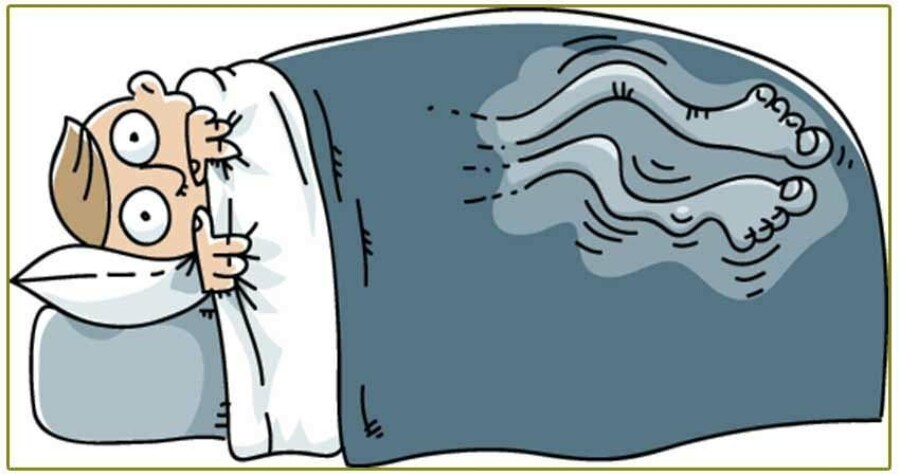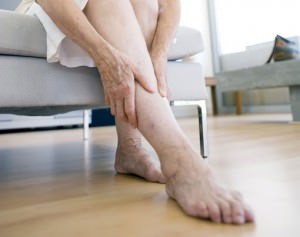The Connection Between Restless Legs Syndrome and Venous Insufficiency


Restless legs syndrome (RLS)– also called Willis EskboM Disease – was first described by Chinese physicians in 1529, and 1763 by French physicians. The condition was first suggested to be associated with venous insufficiency by Dr. Karl A. Ekbom in 1944. RLS is characterized by unpleasant or painful sensations (dysesthesias or paresthesias) in the legs and an urge to move the legs. Symptoms occur when the patient is relaxing, inactive or at rest, and can increase in severity during the night or latter part of the patient’s wake period. Moving the legs reduces and may relieve the discomfort. The discomfort and constant need to move the legs disturbs sleep and can lead to impairment of function in daily life.
Epidemiology
RLS affects approximately 10 percent of adults in the United States. RLS may begin at any age, including childhood, and affects approximately twice as many women as men. Eighty percent of those affected by RLS also experience Periodic Limb Movement Disorder during sleep, in which the patient has brief “jerks” of the legs or arms while sleeping.
Restless Leg Syndrome Causes and Associations
RLS may have genetic causes, and has been associated with low iron storage in the brain as well as diminished dopamine in the basal ganglia (the brain area also associated with Parkinson’s disease). RLS is associated with Parkinson’s disease, diabetes, renal insufficiency, iron deficiency anemia, peripheral neuropathy, and multiple sclerosis. The focus of this article is the association between RLS and venous insufficiency. RLS occurring secondarily from a chronic disease can often be improved or cured by adequately treating the associated condition. For instance, restless legs syndrome caused by iron deficiency anemia can be treated by normalizing iron levels. This relationship has been established so strongly that some medical insurers require that a ferritin level be drawn on any patient before initiating another treatment for RLS.
Restless Leg Syndrome Treatments
Treatment for RLS depends upon the cause. If a primary condition is responsible, then optimizing treatment for the associated condition may help the symptoms. Frequently, however, no clearly associated condition is known and the RLS is “idiopathic,” or treatment of the underlying condition does not adequately resolve the symptoms. In these cases treatment is directed to the proximate known cause, which is a decrease in dopamine in areas of the basal ganglia. Anti-Parkinsonian medications such as carbidopa-levodopa, pergolide, bromocriptine,and ropinirole will often ease the symptoms.
The Association of RLS with Venous Insufficiency
Those who treat varicose veins have long heard from their patients’ descriptions of throbbing, buzzing, creepy-crawly pains in the lower extremities – symptoms that sound very similar to those of RLS. Restless legs syndrome has long been accepted as a symptom of venous insufficiency by phlebologists. It was McDonagh, et al., in 2007 who published the paper, “Restless legs syndrome in patients with chronic venous disorders: an untold story.” This case- control study found a significant difference (at p < 0.05) between the cases (36% prevalence of RLS) and controls (19% prevalence). The clinical difference found between the two groups was a higher prevalence of cramping symptoms in the group with both RLS and venous insufficiency when compared to the control group that had RLS without venous insufficiency.
The association begs the question as to whether treatment of venous insufficiency (VI) in those who have both RLS and VI, will improve both conditions. In 2008, Clint Hayes and John Kingsley, et al. published their ground-breaking paper “The effect of endovenous laser ablation on restless legs syndrome,” in the journal Phlebology. This cohort study took patients with ultrasound- proven venous insufficiency and RLS (by NIH criteria) and separated them into operative and non-operative cohorts. The operative cohort received endovenous laser ablation and sclerotherapy. The results: correcting the SVI decreased the mean IRLS score 80%. Also, 89% of patients had a decrease in their score of > or =15 points. Fifty-three percent indicated their symptoms “had been largely alleviated” and 31% reported complete relief of their RLS symptoms. Hayes et al. concluded that patients with diagnosed RLS should be sent for ultrasound evaluation for venous insufficiency prior to drug therapy being initiated or continued.
Summary
Restless legs syndrome is a common disorder with a known association with venous insufficiency. RLS is commonly treated with dopaminergic drugs, but these drugs have numerous short and long-term side effects. When RLS co-exists with venous insufficiency, treating the venous insufficiency can provide substantial improvement in the patient’s symptoms and subsequently the patient’s quality of life.